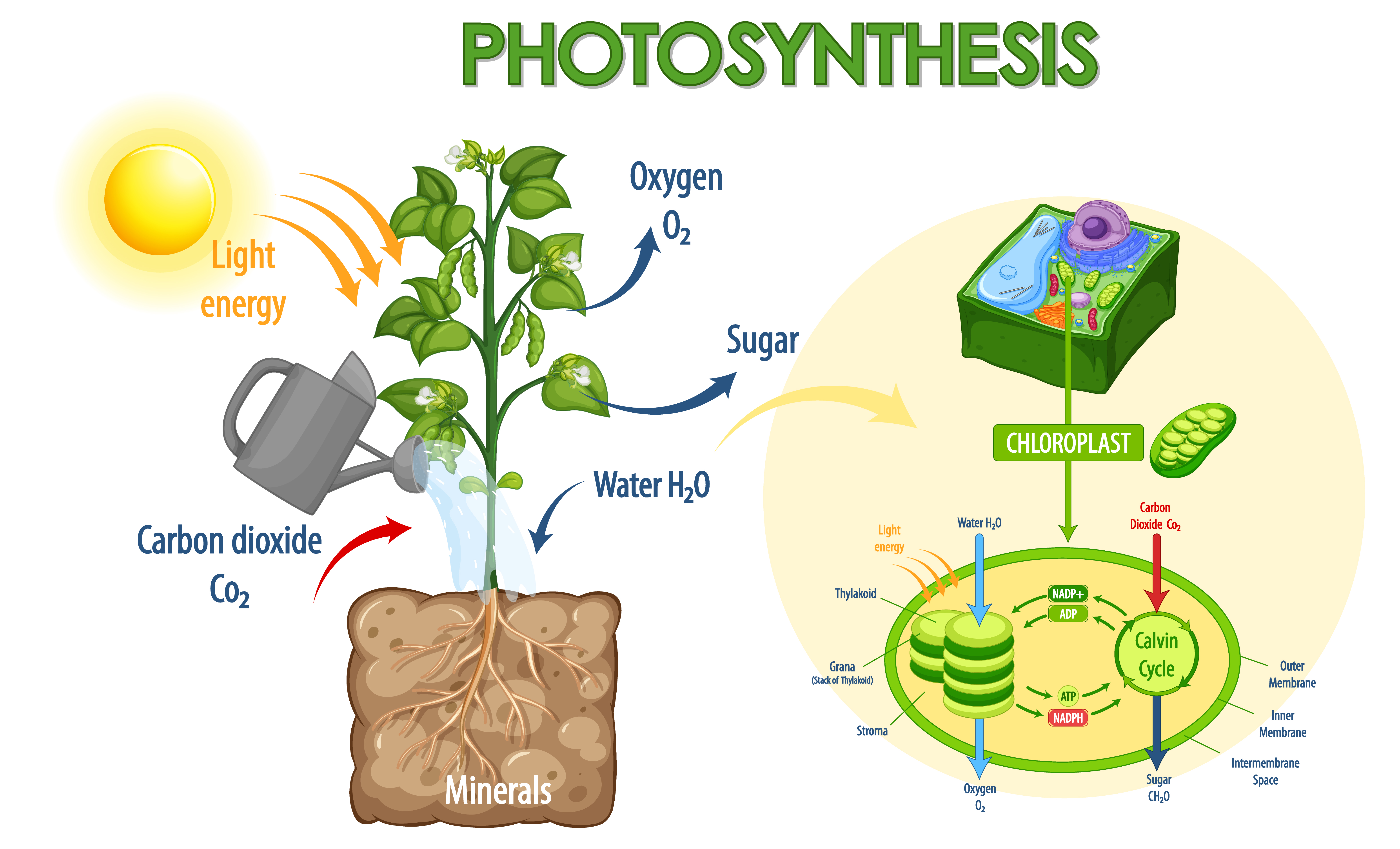The Marvel of Photosynthesis: Nature's Energy Conversion
Photosynthesis is a remarkable biological process that enables plants to convert light energy into chemical energy, fundamentally sustaining life on Earth. This process takes place in the chloroplasts of plant cells, where light energy, water, and carbon dioxide are transformed into oxygen and glucose. The significance of photosynthesis extends beyond the plant kingdom, as it replenishes the oxygen in our atmosphere and forms the foundation of the food chain.
The process of photosynthesis can be divided into two main stages: the light-dependent reactions and the Calvin cycle. The light-dependent reactions occur in the thylakoid membranes of the chloroplasts. Here, chlorophyll and other pigments absorb sunlight, which excites electrons and splits water molecules (H₂O) into oxygen (O₂), protons, and electrons. The oxygen is then released into the atmosphere as a byproduct, while the energy from the excited electrons is used to generate ATP (adenosine triphosphate) and NADPH (nicotinamide adenine dinucleotide phosphate), which are essential energy carriers for the next phase.
The Calvin cycle, also known as the light-independent reactions, takes place in the stroma of the chloroplasts. During this phase, the ATP and NADPH produced in the light-dependent reactions are used to convert carbon dioxide (CO₂) into glucose (C₆H₁₂O₆), a simple sugar that plants use as a source of energy and as a building block for growth. This cycle involves a series of enzyme-driven steps that incorporate carbon dioxide into organic molecules, eventually producing glucose through a process called carbon fixation.
In essence, photosynthesis not only provides the energy necessary for plant growth and development but also maintains the balance of gases in the Earth's atmosphere. By converting light energy into a usable chemical form, plants play an indispensable role in sustaining life, making photosynthesis one of nature's most extraordinary and vital processes.




